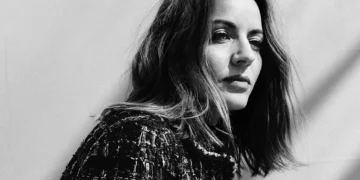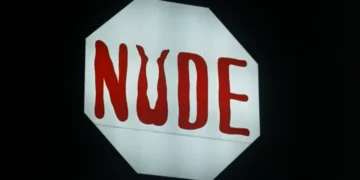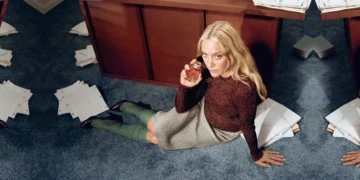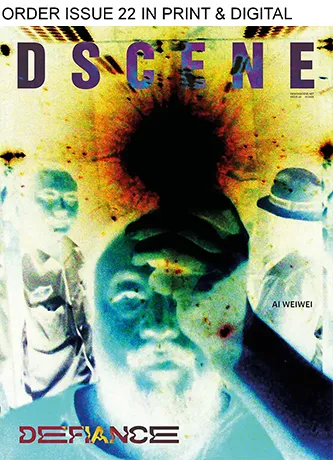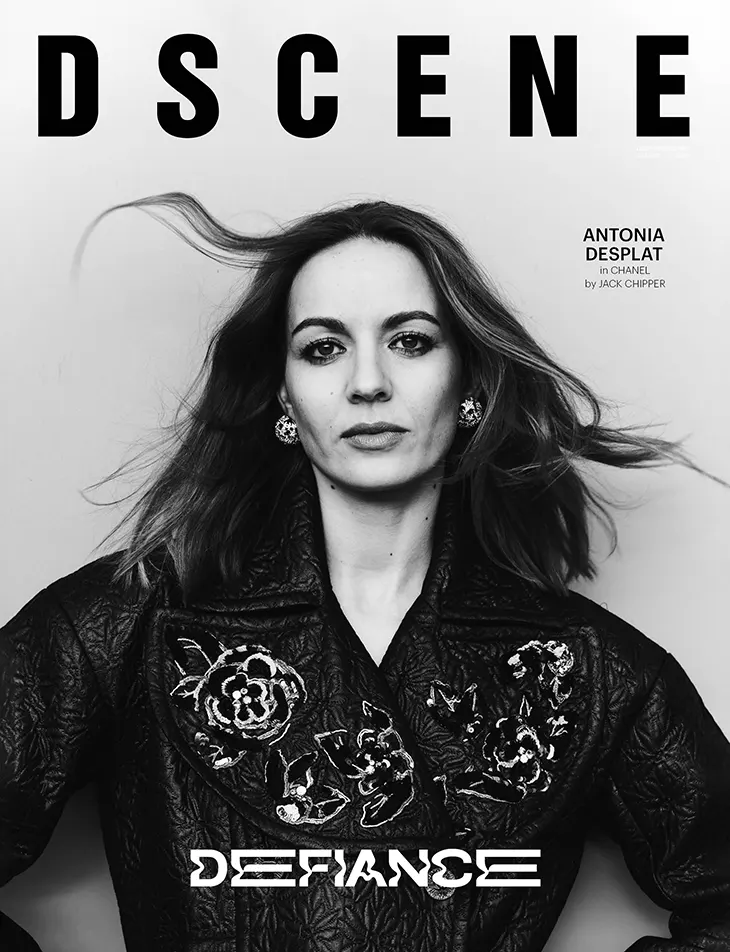
Antonia Desplat is no stranger to transformation, whether portraying enigmatic underworld figures or literary muses, her performances carry a charged stillness that lingers long after the screen fades to black. From her award-winning performance in Held For A Moment, a short film she also wrote and produced, to roles in genre-spanning projects like Apple TV+’s Shantaram, Netflix’s The Sandman, and Wes Anderson’s The Phoenician Scheme, Desplat consistently gravitates toward characters with emotional complexity.
PRE-ORDER IN PRINT AND DIGITAL
Whether on set or behind the scenes, Desplat approaches her work with an intuitive understanding of story and character. Her process is grounded in research, ritual, and restraint. In this DSCENE interview with editor Anastasija Pavić, she speaks about building characters from the inside out and how writing has deepened her connection to performance.
For the Defiance Issue cover story, Antonia Desplat is photographed by Jack Chipper. Styling was by Alexandria Field, with makeup by Lucy Wearing at Forward Artists and hair by Laura Swaine. Nadia Smith assisted on styling. Antonia wears “CHANEL Métiers d’Art 2024/25 collection – Hangzhou. “
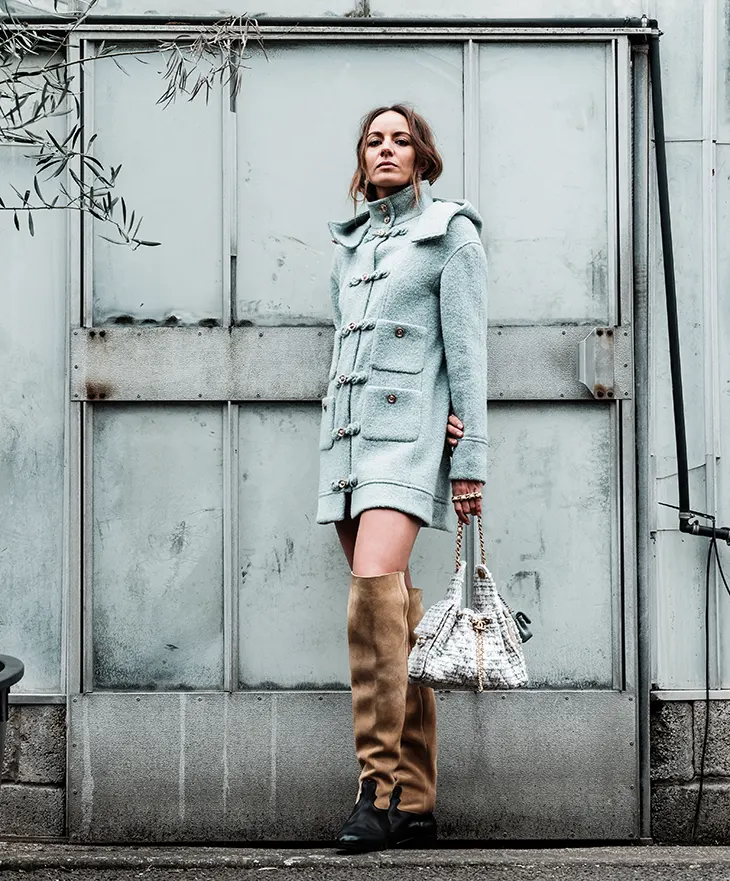 In preparing for a role, how do you transform the character from the page into the version we see on screen? – I do a lot of research beforehand and take in all the information about the character provided by the script. Then I tend to look inward to understand the dissimilarities and similarities between myself and the character. I try to find an animal to relate to in order to discover the character’s physicality and rhythm. I create sensorial memories for the character, and music is the final touch. Once I’m on set, I let it all go, I trust my instincts and bounce off my scene partners and the environment created by the sets. That’s when all the preparation I’ve done comes to life organically and unconsciously.
In preparing for a role, how do you transform the character from the page into the version we see on screen? – I do a lot of research beforehand and take in all the information about the character provided by the script. Then I tend to look inward to understand the dissimilarities and similarities between myself and the character. I try to find an animal to relate to in order to discover the character’s physicality and rhythm. I create sensorial memories for the character, and music is the final touch. Once I’m on set, I let it all go, I trust my instincts and bounce off my scene partners and the environment created by the sets. That’s when all the preparation I’ve done comes to life organically and unconsciously.
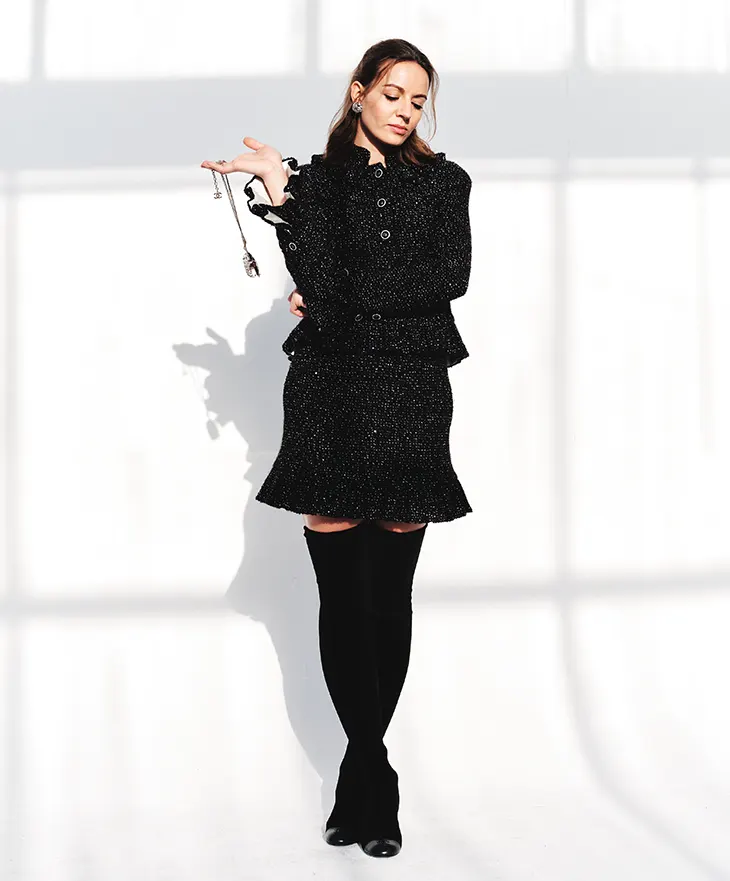
Do you have any specific routines that help calm your nerves before a performance? – Yoga and music. I feel very calm and present after doing yoga, even if it’s only for 20 minutes. Even on very early call times, I try to stick to that little routine. I have a lot of energy, so it helps me center myself before work.
I create sensorial memories for the character, and music is the final touch. Once I’m on set, I let it all go… That’s when all the preparation I’ve done comes to life organically and unconsciously.
What’s the most unusual thing you’ve ever done to get ready for a role? – I wrote a movie about a young woman who has a stillbirth. The preparation for this role was very intense, as I’ve never had a baby, and I wanted to do justice to the story and to the many women who shared their experiences with me. One part of the process involved walking around town for a few weeks with an incredibly real-looking fake baby bump. I ran into a few friends on the street who aren’t in the industry and hadn’t seen me in a while, and the explanation process was very bizarre, to say the least. A bit weird.

Have there been moments in your career when you actively sought roles that defy industry stereotypes? – Yes, for sure. As a French woman, I often get typecast as the French mistress or the French girlfriend, which I don’t mind, but I love to be challenged. I don’t do this job to play myself. I want to transform physically and explore different characters and help tell meaningful, important stories. That’s what I aimed to do when I wrote Held For A Moment. I wanted to create a story and a role with depth and meaning, and it was incredibly exciting to create and produce my own work.
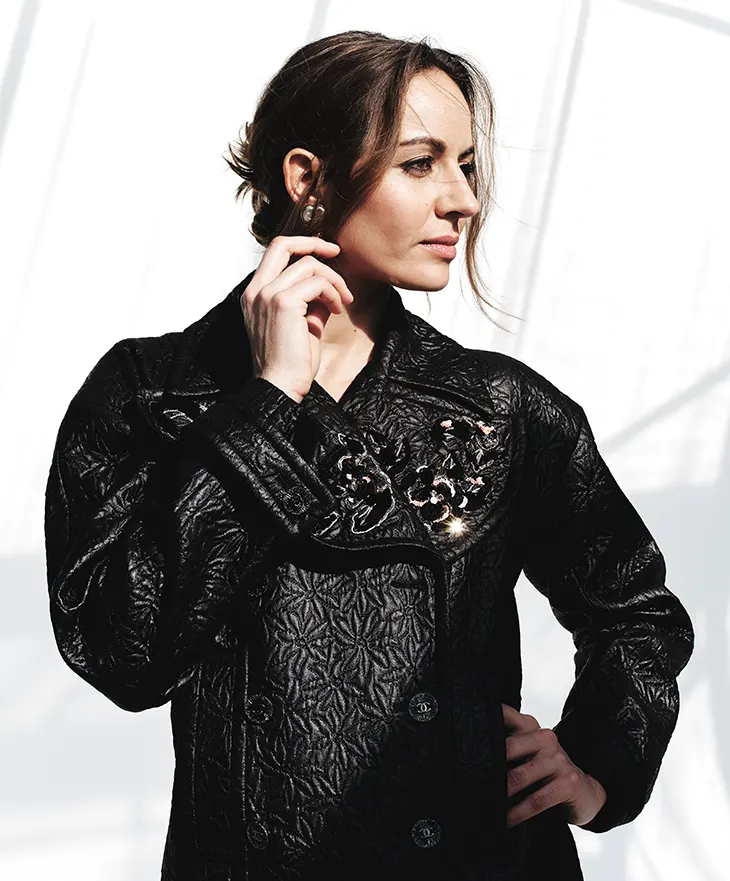
Do you think acting itself can be an act of defiance? – It definitely can. By portraying someone else, you can allow yourself to be more daring or do things you wouldn’t normally do in everyday life. There’s something freeing and exciting about that. I think any expressive form can be defiant, whether you’re a painter, a musician, a filmmaker, or an actor. We test limits, within society and within ourselves. We provoke, we challenge, we spark debate and disagreement. Art is nothing if it’s not defiant in some way.
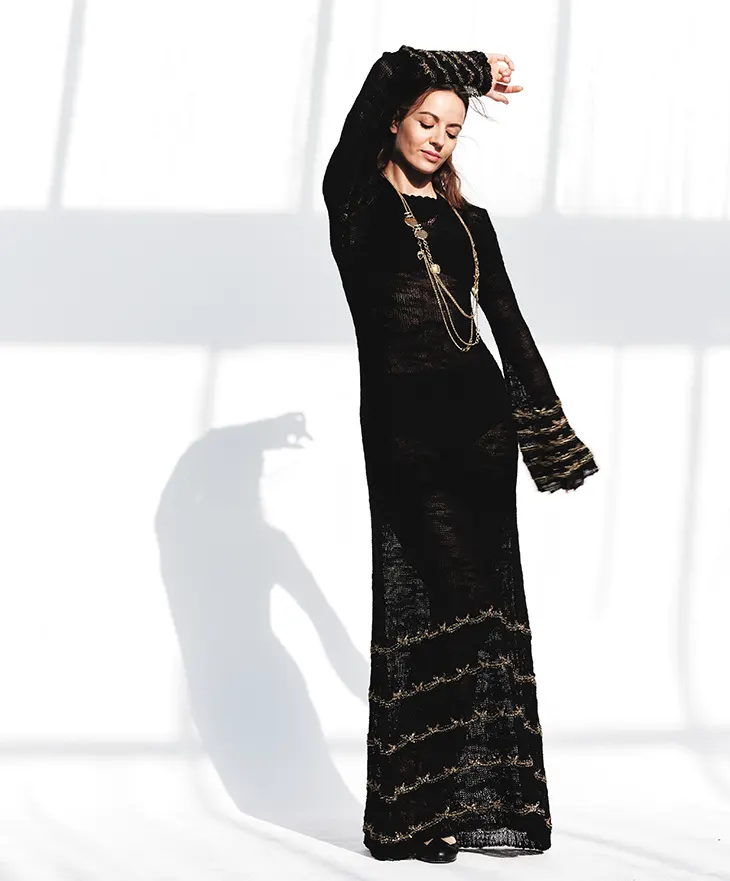
Can you describe how being recognized as Best Actress at the London Independent Film Awards for Held For A Moment has influenced your perspective on your career? – It meant a lot, not just because of the award itself, but because of how challenging and delicate telling this story was. I partnered with a wonderful charity, Sands, which supports women and families who have experienced stillbirths. I wanted to do justice to their stories and help open up a conversation around this incredibly taboo and painful topic. With this film, I felt I could give something back to a community that shared so much with me. Knowing that the film has helped women process their experiences, that hospitals are using it for bereavement education, and, most importantly, being thanked by bereaved mothers, was the greatest reward of making this project.
I don’t do this job to play myself. I want to transform physically and explore different characters and help tell meaningful, important stories
Like Sydney Sweeney and Reese Witherspoon, you’ve established your own production company. Has this move provided greater creative freedom and decision-making power? – Yes, definitely. I was trained in theatre, so I love the collaborative aspect of creating something. In filmmaking, there isn’t always the space or time for that, depending on the production, and as an actor, you’re often in and out once your part is done. By creating my own projects, I get such a thrill from being part of the entire process, from start to finish. I love surrounding myself with people who will elevate the project by bringing their own talent and ideas. It takes so long and so many people to make a film or a show, and I love every step of it, from pre-production to post. It’s like giving birth to something, and that’s incredibly rewarding.
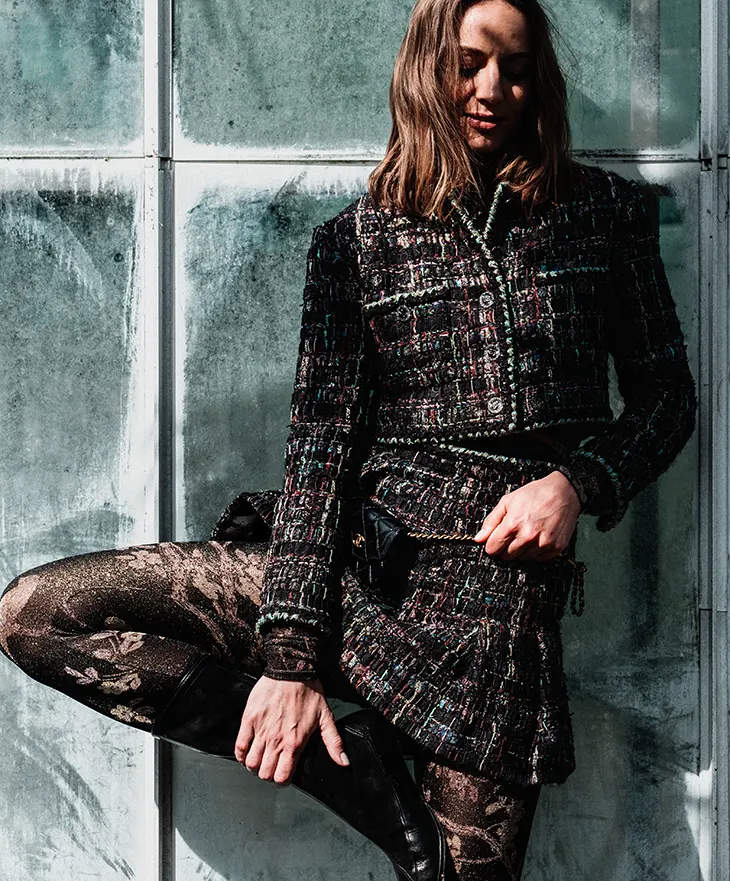
How do you think the acting profession has changed with the advent of new media platforms like streaming services? – I think it took a second to level out. I do believe it’s a wonderful tool to have in the industry because it creates more work opportunities and makes content accessible to many more people. At first, there was an overload of content, but it has slowly found its footing. I love TV formats, but I also love going to the cinema, switching off from the world, and being immersed in a black room at the movies. But that’s not available to everyone, and some people prefer to watch content from the comfort of their homes. So I believe streaming platforms are a great tool for our industry and for stories to reach wide audiences, so long as indie movies and cinemas can still exist.
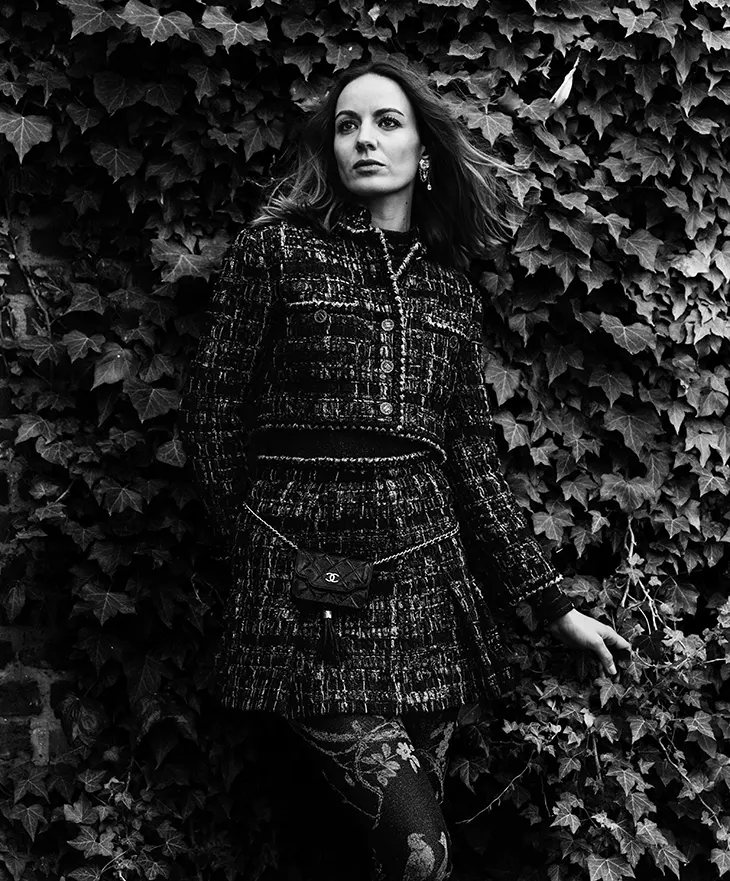
What was it like sharing the screen with icons like Al Pacino and Riccardo Scamarcio in MODI? – It was a pinch-me moment for sure. I never actually shared a scene with Al, but I’ve gotten to know him over the past year and spent time with him, which will never feel normal. I definitely feel like the little girl in me is screaming every time those plans are being arranged. Casually having dinner with Michael Corleone is kind of nuts, to be honest.
As for Riccardo, I grew up watching a lot of Italian movies, Tre metri sopra il cielo was the Italian equivalent of Cry-Baby or Grease. So I was also very excited about that. Riccardo and I both have very fiery personalities in different ways, so we bounced off each other well, for these two characters filled with fire and complexity.
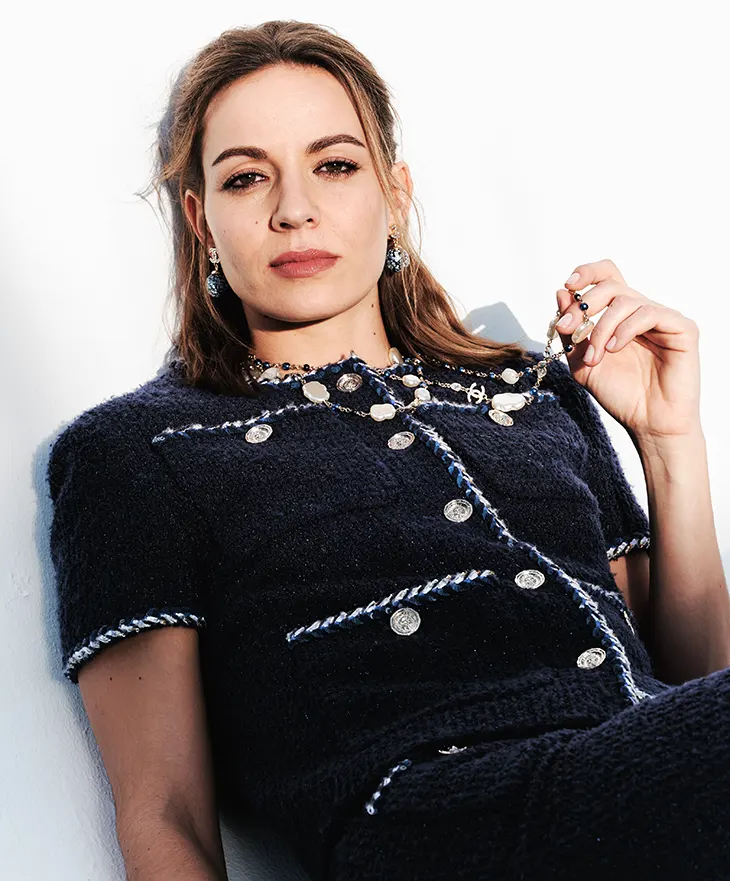
You’re set to appear in The Phoenician Scheme under Wes Anderson’s direction once again. What excited you about this project, and how was it working with Wes for a second time? – It’s always fascinating to watch Wes direct. He knows exactly what he wants, and his attention to detail is mind-blowing. It’s such an honor to be on his set, no matter how small the part, because you’re surrounded by geniuses in every department, from the actors to costumes to camera and editing. It’s actually insane. Wes surrounds himself with the best of the best, and it feels like one big happy family. Just sitting on set and watching a genius at work, surrounded by other brilliant people, is surreal, especially when your green room sofa is casually shared with Benicio del Toro, Willem Dafoe, Bill Murray, and Charlotte Gainsbourg. What the hell!

PRE-ORDER IN PRINT AND DIGITAL
Photographer JACK CHIPPER
Stylist ALEXANDRIA FIELD
Makeup Artist LUCY WEARING at Forward Artists
Hair Stylist LAURA SWAINE
Talent ANTONIA DESPLAT at Public Eye Communications
Stylist Assistant NADIA SMITH
